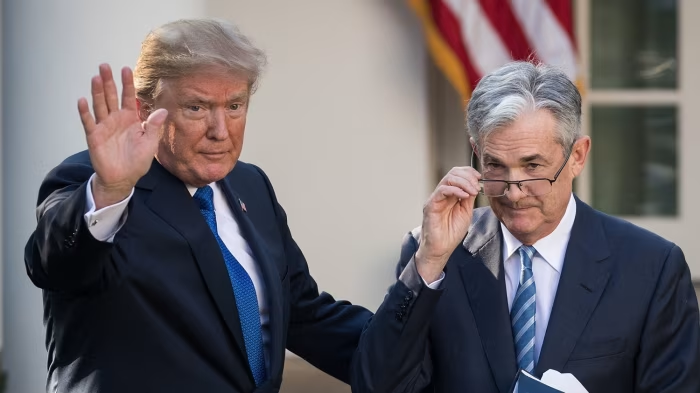U.S. President Donald Trump intensified his public criticism of Federal Reserve Chair Jerome Powell this week, demanding immediate and steep interest rate cuts. Trump went further on Friday, saying the Fed’s board should seize control if Powell refuses to act.
“Jerome ‘Too Late’ Powell, a stubborn MORON, must substantially lower interest rates, now. If he continues to refuse, the board should assume control, and do what everyone knows has to be done!” Trump declared on his social media platform Truth Social.
The Fed’s recent decision to hold interest rates steady on Wednesday, coupled with Powell’s comments dampening hopes for rate cuts this September, has clearly sparked frustration from the president. The policy vote itself was notably split 9-2, an unusual level of dissent in the consensus-driven Federal Open Market Committee (FOMC).
Economy’s Surprising Strength Defies Expectations
Despite global uncertainty and policy-related volatility, the U.S. economy has demonstrated unexpected strength so far in 2025. Manufacturing output hit record highs in late 2024, and corporate profits have rebounded after a sharp decline early this year.
The labor market remains tight, with unemployment at 4.1% in June, only slightly above the historic low of 3.4% seen in April 2023. Inflation, though still above the Fed’s 2% target at 2.7%, has been steadily moderating. This combination of resilient growth and controlled inflation complicates calls for rapid policy easing.
Monetary Policy Near ‘Neutral Zone’
The Federal Reserve’s real policy rate, the effective interest rate after accounting for inflation expectations, currently stands near 4.33%, closely matching the New York Fed’s estimate of the natural rate of interest at 1.37%.
This suggests that monetary policy is roughly neutral, neither stimulating nor constraining economic activity. Cutting rates significantly under these conditions risks overheating the economy or reigniting inflation pressures, which the Fed is mandated to prevent.
Trump’s Trillions Claim Misses the Mark
President Trump has claimed that the Fed’s current policy is costing the U.S. government trillions by keeping borrowing costs high. However, managing federal debt costs is not the Fed’s role.
History shows that central banks forced to suppress interest rates for government benefit, as seen in countries like Argentina and Zimbabwe, face disastrous economic outcomes. Currently, U.S. 10-year Treasury yields hover around 4.3%, similar to levels since late 2022, reflecting stable borrowing costs despite political rhetoric. The more effective way to reduce government debt expense is through fiscal responsibility, not monetary manipulation. While interest rates impact borrowing costs, many American households and businesses are grappling with other challenges.
Real Struggles Lie Beyond Interest Rates
The job market has cooled, with fewer openings per job seeker than a few years ago. Stricter immigration policies have shrunk the labor pool, dampening economic activity rather than expanding opportunities. Inflation remains a concern, with prices roughly 25% higher than pre-pandemic levels and tariffs contributing to rising consumer costs. The recently enacted “One Big Beautiful Bill Act” (OBBA) offers limited stimulus, mainly benefiting higher-income earners and large corporations, while wage growth slows and everyday budgets tighten.
Why Fed Independence Is Non-Negotiable
Calls by President Trump to fire or replace Fed Chair Powell risk undermining the independence that anchors U.S. economic stability. Political interference could trigger market turmoil, elevate inflation expectations, and push Treasury yields higher — all of which would increase borrowing costs for Americans. Such instability would make it harder, not easier, for future Fed leaders to pursue the low rates Trump demands. The Fed’s credibility as an impartial institution is vital to maintaining investor confidence and sustainable economic growth.






